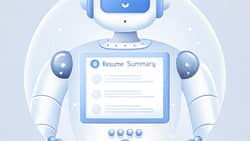If you’re applying for your first job or going back to work after a break, you’ve probably heard about the importance of having a resume. But what is a resume? And do you really need a resume, especially in other situations?
We’ll break down everything you need to know about resumes, with expert tips and examples that you can use to create your own.
What is a resume for a job?
It sounds fancy, but the definition of a resume is quite simple. It’s a professional document that outlines your experience, skills, and other qualifications for a job.
When hiring for open jobs, most employers expect to receive resumes from candidates. Hiring managers review these documents to narrow down the list of applicants and decide who they want to interview.
Resume or CV?
A resume and a curriculum vitae (CV) are essentially the same thing. They’re both documents that describe your professional qualifications. The main difference is that a resume is the common term in the United States and Canada, while other countries use the term CV instead.
Examples of a resume
Here are a few examples to show you what a resume looks like:
Education resume example
Finance resume example
Healthcare resume example
What is the purpose of a resume?
If you’re wondering whether you need a resume to apply for jobs, the answer is yes. A resume is an essential part of most job applications.
With a well-written resume, you can:
- Make a good first impression. In most cases, your resume will introduce you to prospective employers. It’s a chance to make a great first impression and leave them wanting to know more about you.
- Market yourself to employers. A resume is short (usually one page), so it needs to capture the reader’s attention quickly. It should highlight your best qualities and make a strong case for hiring you.
- Land an interview. A resume may not get you the job, but it can move you forward in the hiring process. The goal is to get an interview, so that you can impress a future employer in person.
What are the elements of a resume?
While resumes can vary in style, design, and layout, most have the same key elements.
Your resume should include these five sections:
1. Resume header
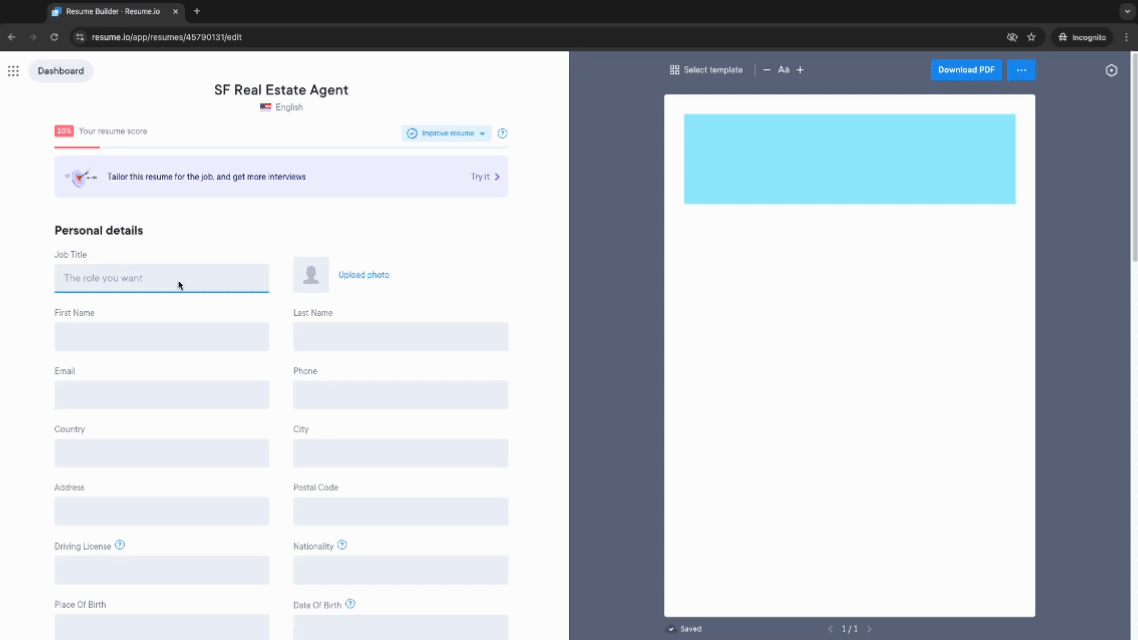
A hiring manager can’t contact you if they don’t know how to reach you, so your resume needs to have a header with your contact information.
In the resume header, provide this information:
- Your full name
- A phone number where recruiters can easily reach you
- A professional email address
- Your city and state
- A link to your online portfolio or LinkedIn profile (optional)
For safety reasons, don’t provide your full mailing address on your resume. If you’re looking for jobs outside of your current area, you can add the phrase, “ Willing to relocate.”
2. Professional summary

A professional summary is a brief statement summarizing the top reasons why an employer should consider hiring you. The top of your resume is prime real estate, so make sure it’s concise, focused, and attention-worthy. A professional summary is usually no longer than two to three sentences.
Results-driven marketing specialist with over three years of experience driving growth through digital campaigns. Proven record of increasing online engagement by 34%.
3. Education
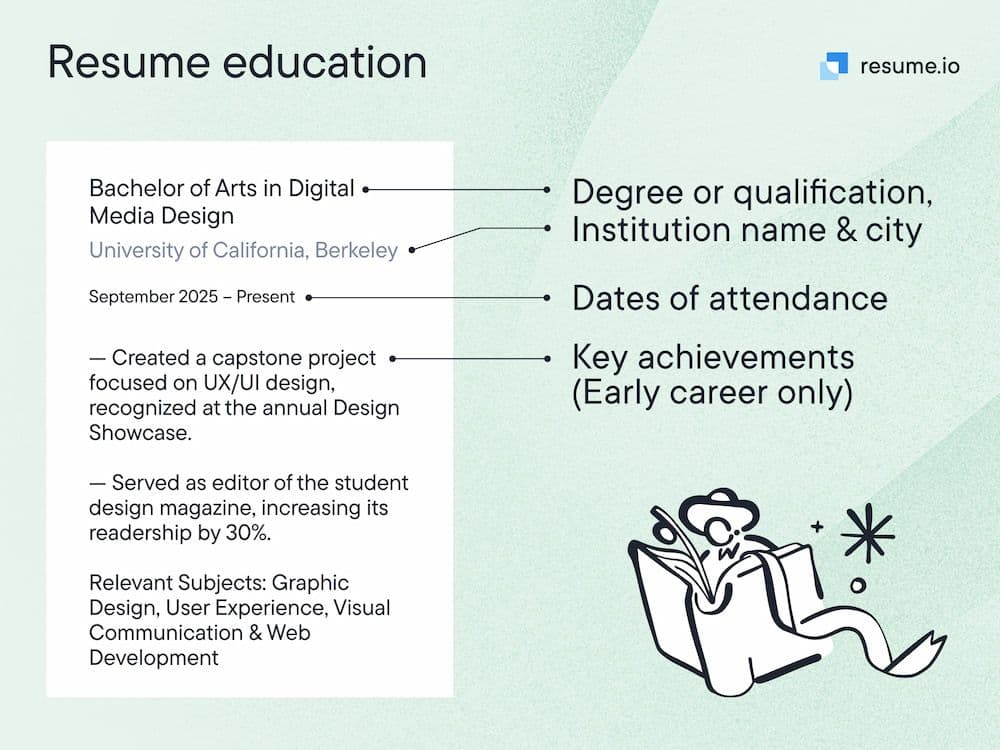
This section details your academic background. Include your highest level of education, such as a bachelor’s degree or high school diploma. Provide your field of study, the name of your school, and the dates you attended.
If you have limited or no professional work experience, you might want to expand your education section to include other details, such as:
- GPA (if higher than 3.5)
- Relevant coursework
- Academic awards or honors
4. Experience

In this section, list all of your previous work experience, including jobs and internships. If you’ve never worked in a professional environment, you can include other types of experience, such as volunteer work or personal projects.
For each position on your resume, include:
- Your title
- The company’s name
- Your dates of employment
- Bullet points describing your duties, achievements, and outcomes

Quantify your work experience
Whenever possible, add quantifiable numbers to your bullet points under each work experience, such as dollar amounts, rates, or percentages, to demonstrate the measurable impact you achieved.
5. Skills
Your resume should list your top skills relevant to the job you’re applying for. If you’re not sure what skills are relevant, review the job description to identify the ones mentioned there.
Remember to emphasize your hard skills, such as software programs or technical proficiencies, but also include a few soft skills, such as communication, teamwork, or creativity.
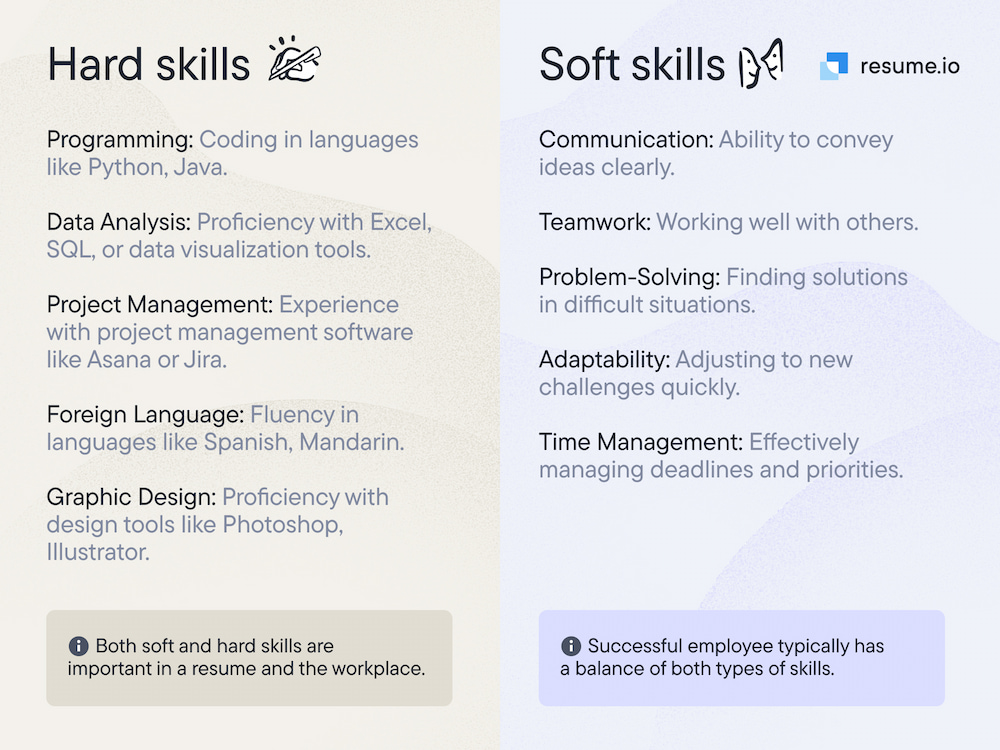
What are the 3 types of resume formats?
The resume format you use can help you organize your information and emphasize your strongest qualifications.
There are three main resume types:
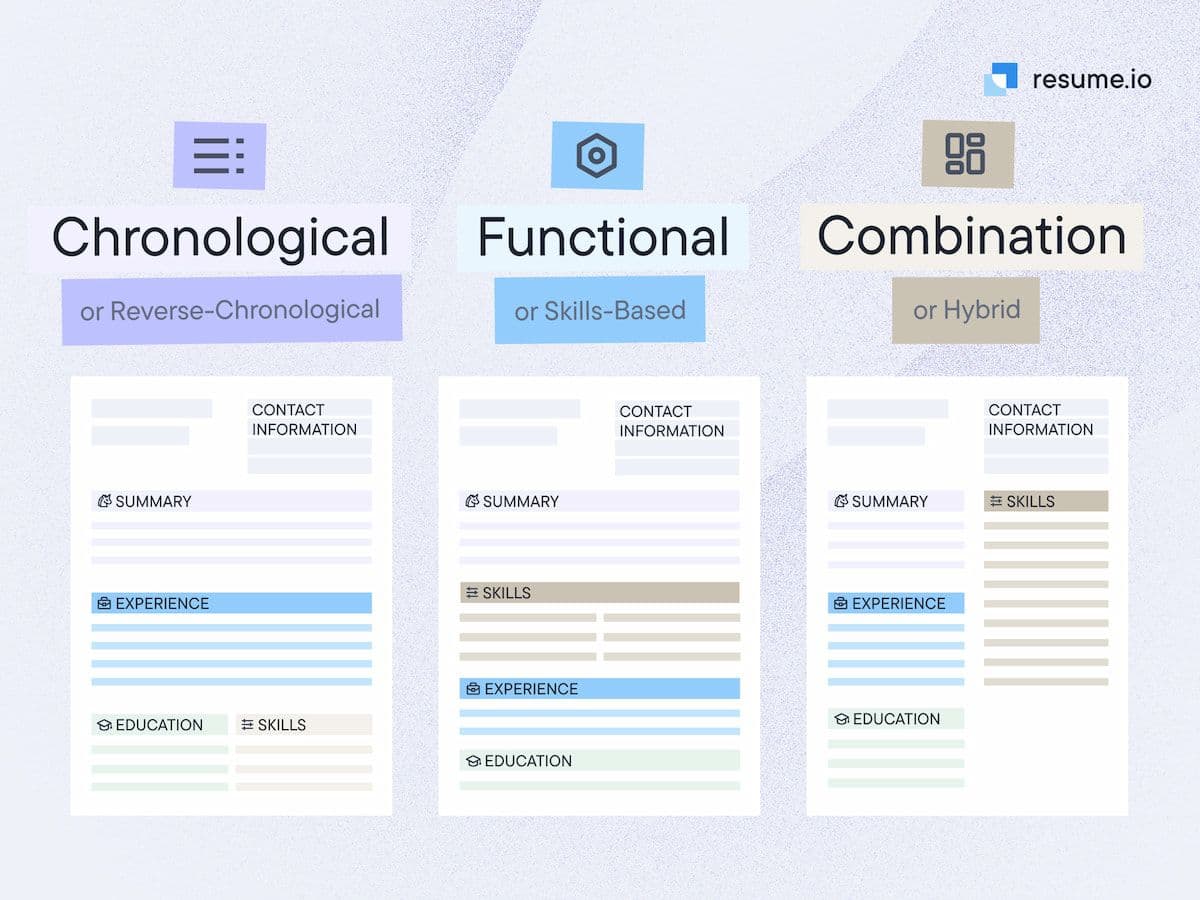
1. Chronological resume
A chronological resume is the most common format. It focuses on listing your experience in reverse order, starting with your most recent job and working backwards through your employment history.
A chronological resume will be familiar to most hiring managers and applicant tracking systems (ATS), so it’s the best choice if you have some relevant work experience. However, if you’re just starting your career or returning after a gap, another resume format may work better.
2. Functional resume
While a chronological resume focuses on your experience, a functional resume showcases your skills. It groups your skills into categories, such as “Customer Service” and “Leadership,” so that you can share how you’ve used those skills throughout your career.
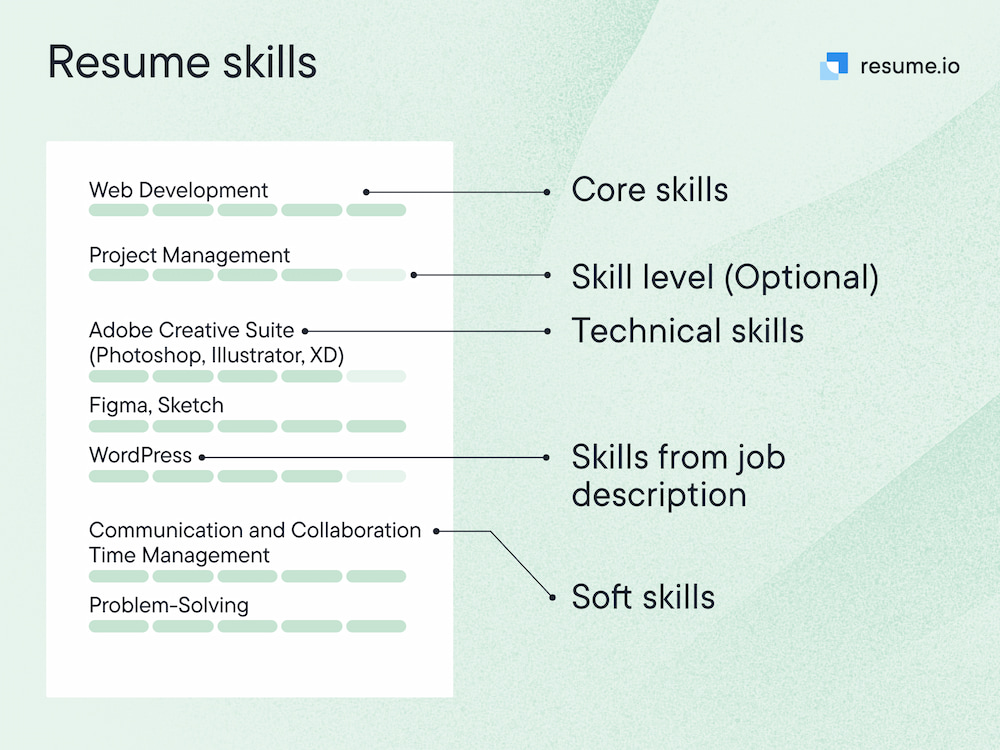
A functional resume works well if you want to disguise gaps in your work history. It’s also a good choice for recent graduates who don’t have much experience yet.
3. Combination resume
A combination resume, also called a hybrid resume, is exactly what it sounds like. It’s a combination of the other two resume formats. It gives equal attention to your experience and skills.
Choose a combination resume if you have a specialized skill set you want to highlight. It also works well if you want to move up in your career, but are slightly lacking in experience.
Our resume.io online resume builder can help you find the best resume format for your industry and experience based on our market-tested resume templates.
FAQs about resumes
Got more questions? Here are the answers to other frequently asked questions about resumes:
Do I need a resume to apply for a job?
More than likely, yes. Most employers require you to submit a resume when you apply for open positions, though some may offer in-person or online applications.
What is a simple resume?
A simple resume usually has a clean, streamlined design without many bells and whistles. It typically includes sections for the summary, work experience, education, and skills.
Is a resume the same as a cover letter?
No, but they often work together. A resume provides an overview of your qualifications, while a cover letter describes how you’ve used those skills to make a difference and become the ideal candidate for the job.
